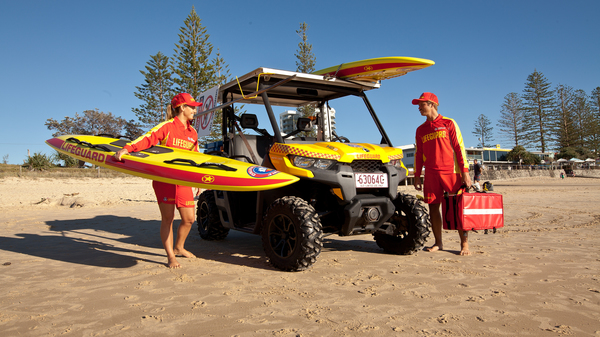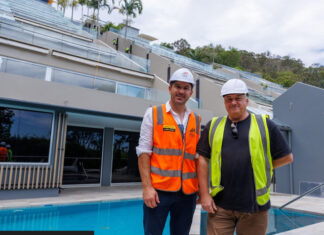
Surf Life Saving Queensland volunteer from Forrest Beach to Rainbow Bay have saved more than 700 lives this 2019/20 patrol season.
Since the September school holidays and start of May, more than 320,000 hours had been dedicated by volunteers to protecting the lives of beachgoers.
During this time, the red and yellow army performed 71,723 preventative actions to proactively safeguard swimmers, and applied a staggering 2,395 first aid treatments in Queensland.
For the Sunshine Coast, 20628 prevenative actions were taken for swimmers, 879 first aid treatments were given and 296 rescues were made along Coast beaches.
Surf lifesavers patrolled beaches one last time on Labour Day, before Surf Life Saving Queensland’s (SLSQ) 2019/20 patrol season officially ended May 4.
This season has been like no other with lifesavers not flying the red and yellow flags for the past five weeks due to the COVID-19 pandemic, however throughout this period volunteers have continued to ensure beachgoers safety by conducting surveillance patrols.
SLSQ Lifesaving Services Coordinator Sunshine Coast Caige Price said it had been a challenging end to the season for the state’s volunteers who had performed a remarkable job.
“We could not be prouder of our surf lifesaving volunteers,” he said.
“Their efforts over the past eight months have to be commended, especially in light of some difficult circumstances.
“Our members have continued to man their post throughout the COVID-19 pandemic and remained committed to our vision of zero preventable drowning deaths in Queensland public waters.
“The work of our lifesavers has been nothing short of remarkable, especially when you consider the number of lives saved this season.”
Over the past season, SLSQ delivered several initiatives across the state in a bid to offer even greater protection to beachgoers, including the Summer Surf Safety campaign.
Mr Price said the successful campaign was rolled out over summer, following a spike in drownings last season. The campaign highlighted the fact that most drownings are preventable.
“The campaign aimed to reduce beach-related drowning deaths amongst males over 50 years old, while also increasing general beach safety and awareness,” he said.
“The shocking images of a man in difficulty in the water calling for help as lifesavers rushed to his aid formed the basis of the campaign.
“The overall aim of the confronting imagery was to remind beachgoers that by swimming between the flags, you not only protect yourself, but you also prevent a loved one’s potential grief.”
In addition to the Summer Surf Safety Campaign, SLSQ’s Community Awareness team assisted in implementing an International Student Water Skills Assessment across that state.
This assessment was introduced to prevent drowning deaths amongst international students by ensuring homestay students were able to demonstrate basic water safety competencies prior to undertaking any aquatic activities while in Australia.
Throughout the season Surf Crew Cars have continued to operate on the Gold and Sunshine Coasts, delivering free educational clinics and educating more than 44,000 beachgoers on how to stay safe.
Mr Price urged beachgoers to take care during the COVID-19 pandemic and continue to put their safety first.
“Lifeguard services will continue to conduct surveillance patrols to ensure beachgoers safety at Queensland beaches, however please follow the advice and stay at home,” he said.
SLSQ will continue to follow all government advice and will put the red and yellow flags back up at the appropriate time.






